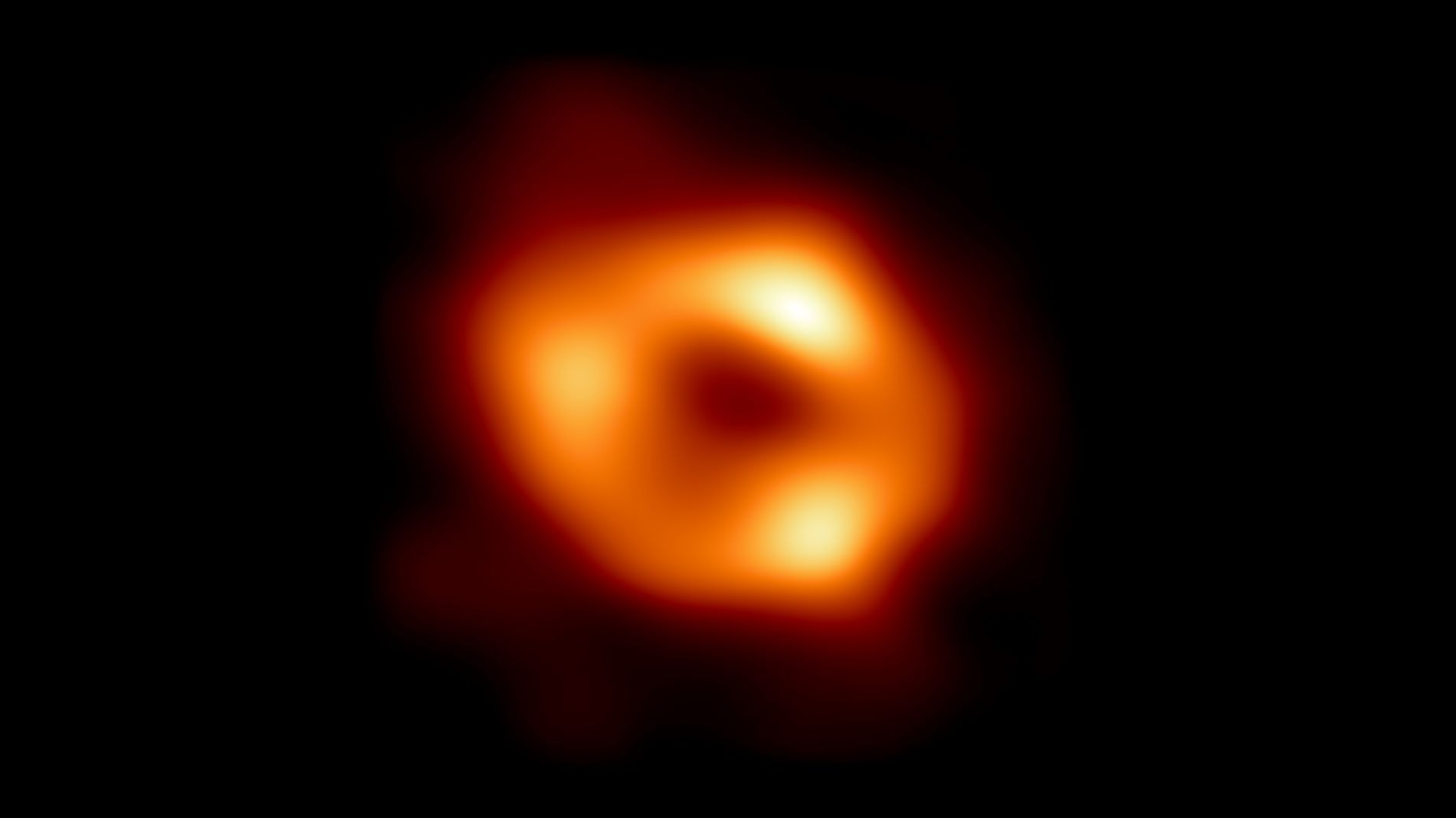How scientists obtained the first image of Sagittarius A*, the black hole at the centre of our Milky Way

This year is the 50th anniversary of the awarding of the Nobel Prize in Physics for “aperture synthesis”. This is the technique of using several radio dishes in concert to mimic, or “synthesise”, the capability of a much larger radio dish.
To understand why anyone would want to do this, it is necessary to know a little background. The fine detail that a telescope can “see” in the sky depends on two things. The first is the wavelength of the light it is collecting. Radio waves are typically about a million times bigger than waves of visible light, which means that the vision of a radio telescope is about a million times blurrier than an optical telescope of the same size. The obvious way to compensate for this deficiency is to use a bigger telescope. This is because the second factor that determines the fine detail a telescope can discern is its size: the larger the telescope, the more it is able to zoom in on its celestial quarry.
Unfortunately, if you build a radio dish much more than 100 metres across, it collapses under its own weight. And this is why astronomers have gone down the rather complicated route of harnessing together relatively small dishes to simulate a single giant dish.
The first to attempt this, shortly after the Second World War, were radar engineers turned radio astronomers in Australia. They put a Yagi antenna (similar to an old-style TV aerial) on an 85-metre-high clifftop just south of the entrance to Sydney Harbour, not far from where Captain James Cook landed at Botany Bay in 1770. Its reflection in the sea below the cliffs created a second, “virtual”, antenna – the ultimate astronomical Buy One Get One Free. Later, astronomers in Australia and England assembled real, rather than virtual, arrays of radio dishes, each of which could be moved along railway tracks.
It was for the construction of two such arrays in Cambridge – the One-Mile Telescope and its successor, the 5-Kilometre Telescope – that Martin Ryle and Anthony Hewish were awarded the 1974 Nobel Prize. Incidentally, this was the same prize that many astronomers think Jocelyn Bell should have shared, since Hewish was also cited by the Nobel committee for his role in the discovery of pulsars, which Bell, as a graduate student, had first spotted. Still, Hewish’s contribution to the development of the technology of radio telescopes did prove to be important.
In aperture synthesis, the individual dishes move one step at a time along railway tracks, registering radio waves from the sky as they go, until they have effectively filled in a larger dish. Think of a chessboard with just two pieces, in which they are moved about until they have occupied every one of the 64 squares on the board.
The wild child of aperture synthesis is Very Long Baseline Interferometry, or VLBI, in which radio dishes, located at sites scattered across the world, synthesise a radio telescope the size of the Earth. Clearly, the individual dishes in such a global array fill in only a minuscule portion of an Earth-sized chess board. They create a severely moth-eaten telescope. But, even with this shortcoming, VLBI has revolutionised astronomy. It has helped us to learn about extraordinary cosmic phenomena – for instance, the titanic jets of matter that stab outwards for millions of light years from the poles of the supermassive black holes that lurk in the hearts of galaxies.
In 2022, one such VLBI array, known as the Event Horizon Telescope, obtained the first-ever image of Sagittarius A*, the black hole at the centre of our Milky Way that has 4.2 million times the mass of the Sun. And this year, it turns out, is also the 50th anniversary of the discovery of Sagittarius A*.
Inside a black hole like Sagittarius A*, space and time shatter into something more fundamental. We don’t know what that thing is because our theories of physics break down. But the Event Horizon Telescope image could help us to learn more about this mysterious cosmic object, bringing us closer to uncovering the secrets of black holes and of our own galaxy. We beat ourselves up for things like global warming and the damage our species has done to the environment. But, sometimes, perhaps we should sit back and consider our successes for a moment. We are a puny species of ape that came down from the trees onto an African plain only a few million years ago. We have a 1.5-kilogram brain that is made mostly of jelly and water. But we have seen to the edge of space and time.
This article is from New Humanist’s autumn 2024 issue. Subscribe now.


